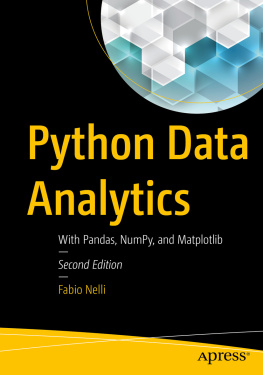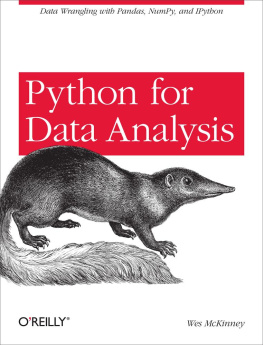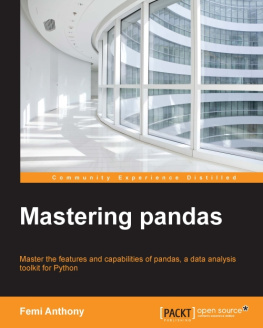Wes McKinney - Python for Data Analysis: Data Wrangling with Pandas, NumPy, and IPython
Here you can read online Wes McKinney - Python for Data Analysis: Data Wrangling with Pandas, NumPy, and IPython full text of the book (entire story) in english for free. Download pdf and epub, get meaning, cover and reviews about this ebook. year: 2017, publisher: O’Reilly Media, genre: Computer / Science. Description of the work, (preface) as well as reviews are available. Best literature library LitArk.com created for fans of good reading and offers a wide selection of genres:
Romance novel
Science fiction
Adventure
Detective
Science
History
Home and family
Prose
Art
Politics
Computer
Non-fiction
Religion
Business
Children
Humor
Choose a favorite category and find really read worthwhile books. Enjoy immersion in the world of imagination, feel the emotions of the characters or learn something new for yourself, make an fascinating discovery.
- Book:Python for Data Analysis: Data Wrangling with Pandas, NumPy, and IPython
- Author:
- Publisher:O’Reilly Media
- Genre:
- Year:2017
- Rating:4 / 5
- Favourites:Add to favourites
- Your mark:
Python for Data Analysis: Data Wrangling with Pandas, NumPy, and IPython: summary, description and annotation
We offer to read an annotation, description, summary or preface (depends on what the author of the book "Python for Data Analysis: Data Wrangling with Pandas, NumPy, and IPython" wrote himself). If you haven't found the necessary information about the book — write in the comments, we will try to find it.
Get complete instructions for manipulating, processing, cleaning, and crunching datasets in Python. Updated for Python 3.6, the second edition of this hands-on guide is packed with practical case studies that show you how to solve a broad set of data analysis problems effectively. Youll learn the latest versions of pandas, NumPy, IPython, and Jupyter in the process.
Written by Wes McKinney, the creator of the Python pandas project, this book is a practical, modern introduction to data science tools in Python. Its ideal for analysts new to Python and for Python programmers new to data science and scientific computing. Data files and related material are available on GitHub.
- Use the IPython shell and Jupyter notebook for exploratory computing
- Learn basic and advanced features in NumPy (Numerical Python)
- Get started with data analysis tools in the pandas library
- Use flexible tools to load, clean, transform, merge, and reshape data
- Create informative visualizations with matplotlib
- Apply the pandas groupby facility to slice, dice, and summarize datasets
- Analyze and manipulate regular and irregular time series data
- Learn how to solve real-world data analysis problems with thorough, detailed examples
Wes McKinney: author's other books
Who wrote Python for Data Analysis: Data Wrangling with Pandas, NumPy, and IPython? Find out the surname, the name of the author of the book and a list of all author's works by series.

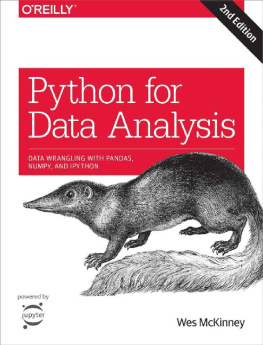
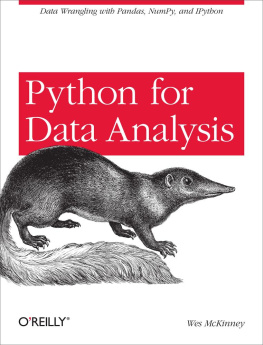
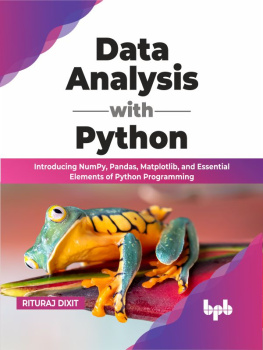

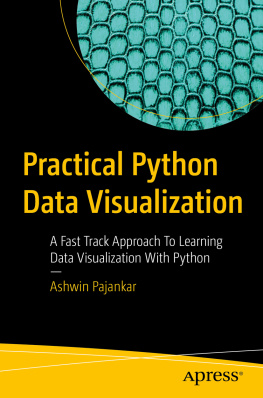
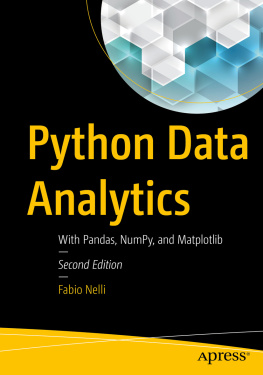
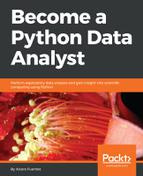
![Curtis Miller [Curtis Miller] - Hands-On Data Analysis with NumPy and pandas](/uploads/posts/book/119333/thumbs/curtis-miller-curtis-miller-hands-on-data.jpg)
